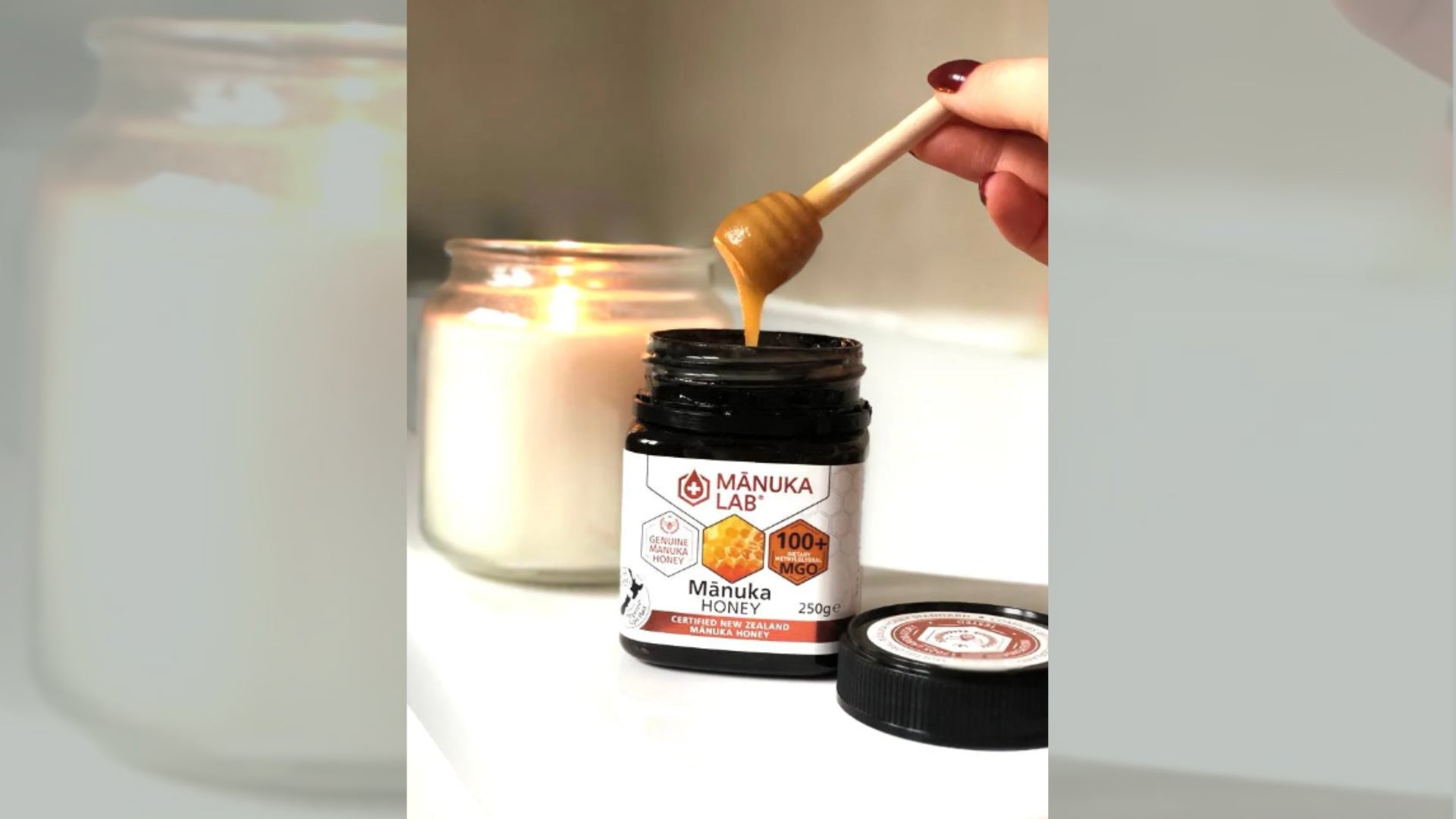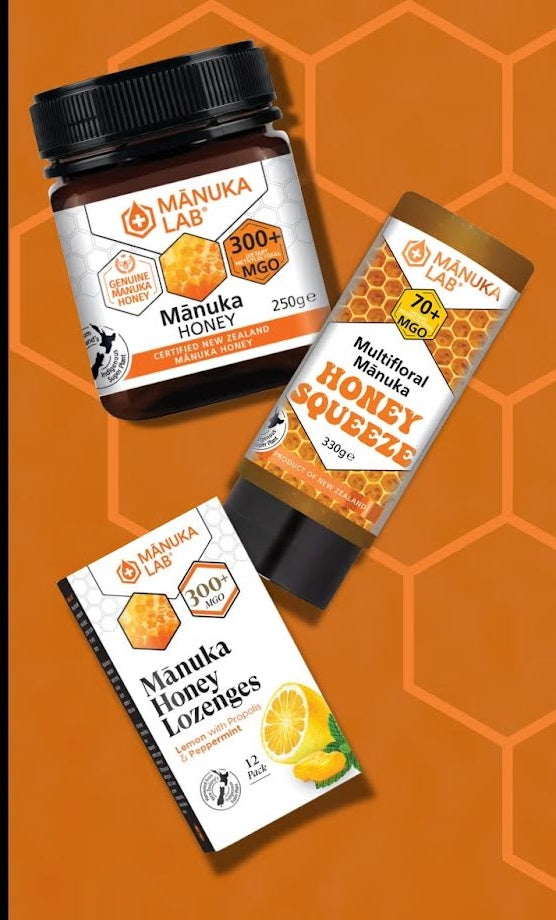

Marketed as having positive effects on our wellbeing – from colds and flu, digestion, wound healing and skincare, Manuka Honey has built a reputation of being ‘the world’s most prized honey’. Therefore, it will probably come as no surprise that fraudulent Manuka Honey has found its way onto shelves across the globe. So how do you ensure that the Manuka product you’re interested in buying is genuine?
As purveyors of genuine New Zealand Manuka Honey in the UK, we have all the information you need to ensure you make the right purchasing decision – so read on for our tips on how to spot fraudulent Manuka!
What’s Behind The Popularity of Manuka Honey In The UK?
As the days are growing darker and colder, it’s the perfect time to talk about the influence of Manuka Honey in the UK. Honey has long been said to be a great soothing agent for a sore or tickly throat – in fact, instead of turning to ineffective antibiotics, health professionals in England have recommended that people take honey to help soothe cold and flu symptoms.
Honey is the ideal agent to use for several reasons; not just for its the smooth and tasty texture, but also because most types will have a degree of anti-bacterial activity. This is thanks to the presence of Hydrogen Peroxide – however, not all honey is created equal. Several factors, including light, heat, time and commercial processing can dull the effectiveness of Hydrogen Peroxide. What separates Manuka from the rest is its natural antibacterial element, provided by a more stable chemical compound called Methylglyoxal (MGO).
Unfortunately, Methylglyoxal can be added to honey after it has been harvested – so in an attempt to take advantage of the Manuka boom, many counterfeit products have found their way into the market bearing the ‘Manuka’ name. It’s also not illegal to mix Manuka with other, cheaper honey (as long as the packaging doesn’t state that it is ‘genuine’) – it’s the wording that potentially confuses buyers. So, what do customers need to know about trusting the labels they read?
Identifying Fraudulent Manuka Honey
Wherever you’re browsing Manuka Honey in the UK – be it on a website or a shelf – always make sure you take the time to read the label. There are several ways in which you can identify whether the Manuka you’re interested in is indeed genuine – these can be:
-
Is it from New Zealand (was it packed and labelled there)? New Zealand has a ban on honey imports, so if a honey has come from there, it must have been produced there. Government rules state that no batch of Manuka should be exported unless it has been tested in an independent lab and shown to contain four chemical markers and one DNA marker that is unique to the Manuka plant. Look for the ‘Tested Certified Manuka’ symbol on jars which proves that it has met the standard.
Another thing to look out for is the ‘packed in New Zealand’ promise – this is the marker that indicates the product was packed and sealed in New Zealand, ensuring that no third-party flavourings or chemicals have found their way into the product on their overseas journey.
-
Look for the MGO rating. To certify and measure the naturally occurring methylglyoxal within Manuka, the industry established an MGO rating system. The higher the MGO rating, the higher the grade (and potency) of the honey inside. While there are other systems that measure Manuka strength (such as UMF), MGO provides the clearest indicator of the product’s methylglyoxal strength to customers.
-
Check the wording on the label. Some honey jars are designed to look like Manuka when they are not the genuine product (they may contain statements like ‘New Zealand Honey’, for example). An authentic New Zealand Manuka honey will always state whether it’s ‘multifloral’ or Manuka Honey if the grade is above 100MGO, 'Monofloral’ – two official definitions of Manuka that have been set by the NZ government. ‘Monofloral’ means that the honey has been primarily made from Manuka nectar whereas ‘multifloral’ is a mix of Manuka nectar with other nectars.
If the Manuka honey you’re looking at does not state that it is multifloral, but instead states that it is a ‘blend’ or ‘blended’, it has likely been mixed with European or Asian honey and therefore cannot be genuine New Zealand Manuka.
- ‘Hive to Home’: Does it profess to be traceable? Any reputable honey seller is able to trace any of their jars back to the beekeeper who harvested it, thanks to their dedication to transparency. As you can imagine, the traceability of Manuka is held to very high standards, so any genuine product will have a ‘hive to home’ promise printed on the packaging.
- Texture and colour. Certified Manuka Honey from New Zealand is beige or light-brown in colour, compared to the yellow/orange colour you get with regular honey. Manuka also has a thicker and creamier texture than you would typically get in Asian or European honey.
So, those were our tips on separating genuine New Zealand Manuka Honey from fraudulent products. If you would like to learn more about the great effects of genuine Manuka (and some great deals on products!), why not browse our website?
Browse Our Range of Genuine Manuka
Please take the time to browse our Manuka product selection – each clickable product page contains more, specific information about each item. On each page, you may also see reviews left by our customers – providing you with a clear insight about the products they received, how they used them and their verdicts.
This is a great way to make an informed decision before you purchase – if you have any questions about the items you see (or on any aspect of Manuka Honey in the UK!), we would be pleased to hear from you! Send your questions to us by an e-mail at wecare@manukalab.co.uk



